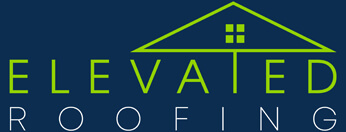Roofing is a critical component of any structure, providing protection against the elements and enhancing the overall aesthetic appeal. There are various roofing materials available in the market, each with its own set of advantages and disadvantages. One such roofing material gaining popularity is multi-layered shingles. In this comprehensive analysis, we will explore the pros and cons of multi-layered shingles, highlighting their suitability for different roofing needs, including roof shingle repair, flat roof repair, and metal roof repair.
Pros of Multi-Layered Shingles
Durability:
Multi-layered shingles are known for their exceptional durability. They are designed to withstand harsh weather conditions, including heavy rain, strong winds, and hail. The multiple layers of these shingles provide added protection, making them less prone to damage compared to single-layer shingles.
Longevity:
Multi-layered shingles tend to have a longer lifespan than traditional shingle types. They can last anywhere from 20 to 50 years, depending on the quality of the shingles and the climate of the region. This longevity can result in significant cost savings over time.
Enhanced Aesthetic Appeal:
These shingles are available in a wide range of colors and styles, allowing homeowners to choose a design that complements their home’s architecture. The multi-layered construction often creates a three-dimensional look that adds depth and texture to the roof, enhancing the overall curb appeal.
Energy Efficiency:
Some multi-layered shingles come with energy-efficient features such as reflective coatings. These coatings help to reduce heat absorption, keeping the interior of the building cooler during hot weather. This, in turn, can lead to lower cooling costs and improved energy efficiency.
Impact Resistance:
Multi-layered shingles are highly resistant to impacts, making them an excellent choice for regions prone to hailstorms. They are less likely to crack or break when struck by hail or debris, reducing the need for frequent roof shingle repair.
Low Maintenance:
Once installed, multi-layered shingles require minimal maintenance. They do not rot or warp like some other roofing materials, and their resistance to algae and moss growth ensures a cleaner and more attractive roof over time.
Warranty Coverage:
Many manufacturers offer extended warranties on multi-layered shingles due to their proven durability. This provides homeowners with peace of mind knowing that their investment is protected for an extended period.
Cons of Multi-Layered Shingles
Higher Initial Cost:
One of the primary drawbacks of multi-layered shingles is their higher upfront cost compared to traditional single-layer shingles. While the initial investment can be substantial, it is important to consider the long-term savings in terms of reduced maintenance and longer lifespan.
Installation Complexity:
Installing multi-layered shingles can be more complex and time-consuming compared to single-layer shingles. Proper installation is crucial to maximize their benefits, and it often requires skilled roofing professionals, which can add to the overall installation cost.
Weight:
Multi-layered shingles are heavier than single-layer alternatives. This can be a concern for some roofing structures, especially if they are not designed to support the extra weight. Before choosing multi-layered shingles, it’s important to assess whether the roof structure can accommodate them.
Limited Availability:
While multi-layered shingles are becoming more popular, they may not be as readily available as traditional roofing materials in all regions. This limited availability could affect pricing and accessibility for some homeowners.
Repairs and Replacement:
In the event of damage to multi-layered shingles, repairs can be more challenging and costly than with single-layer shingles. Matching the existing shingle style and color can be difficult, and replacing individual damaged shingles may be less practical.
Application in Roof Shingle Repair
Pros:
Enhanced durability and longevity make multi-layered shingles a great choice for roof shingle repair, ensuring that repairs last for an extended period.
Their impact resistance is particularly advantageous for areas prone to storm damage, reducing the need for frequent repairs.
The variety of styles and colors available allows homeowners to match existing roofing materials when making repairs.
Cons:
Higher upfront cost may be a consideration for homeowners looking for cost-effective repair options.
The complexity of installation and matching existing shingles can make repairs more challenging and costly.
Application in Flat Roof Repair
Pros:
Multi-layered shingles can be used on flat roofs, providing improved durability and protection.
Energy-efficient options can help regulate temperature on flat roofs, reducing cooling costs.
The low maintenance requirements make them a suitable choice for flat roof repair.
Cons:
Weight may be a concern for flat roofs, as they may not be designed to support the added load of multi-layered shingles.
Installation complexity may require skilled professionals, adding to the overall repair cost.
Application in Metal Roof Repair
Pros:
Multi-layered shingles can be an attractive alternative to traditional metal roofing materials, enhancing the visual appeal of the roof.
Energy-efficient options can help reduce heat absorption, improving the energy efficiency of metal roofs.
Impact resistance is valuable in areas where metal roofs are prone to denting from hail or debris.
Cons:
Compatibility with metal roofing systems may require special considerations during installation and repair.
Higher initial cost compared to some metal roofing materials may deter budget-conscious homeowners.
Multi-layered shingles offer a range of advantages and disadvantages, making them a suitable choice for various roofing needs, including roof shingle repair, flat roof repair, and even metal roof repair. Their durability, longevity, and aesthetic appeal make them an attractive option for homeowners looking for a roofing material that combines style with performance.
However, it’s essential to consider the higher upfront cost, potential installation complexity, and weight concerns, especially when retrofitting existing roofing structures. Before choosing multi-layered shingles, homeowners should assess their specific roofing requirements, climate conditions, and budget constraints to determine if this roofing material is the right fit for their needs.
Ultimately, the pros and cons of multi-layered shingles underscore the importance of careful planning, professional installation, and ongoing maintenance to maximize their benefits and ensure a long-lasting, high-quality roofing solution.
